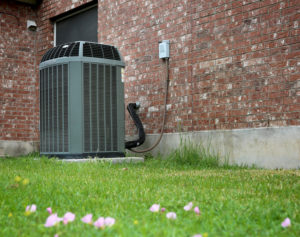System Design in Clarksville, IN, Jeffersonville, IN, Louisville, KY and the Metro Region
The most common misconception about heating and air systems is that bigger is better. A system needs to be sized right or it will never cool or heat properly. Ideally, you are looking for a system design in Clarksville, IN, Jeffersonville, IN, Louisville, KY and the Metro Regionthat will evenly distribute conditioned air through-out the living space and cycle off for a reasonable period of time. (This cycle is determined by a host of factors including desired temperature, outside temperature and the insulation value of your home.) If you oversize a system then the house will heat up or cool down too quickly and the thermostat will become satisfied and shut off the system before the conditioned air is evenly distributed.
system design in Clarksville, IN, Jeffersonville, IN, Louisville, KY and the Metro Regionthat will evenly distribute conditioned air through-out the living space and cycle off for a reasonable period of time. (This cycle is determined by a host of factors including desired temperature, outside temperature and the insulation value of your home.) If you oversize a system then the house will heat up or cool down too quickly and the thermostat will become satisfied and shut off the system before the conditioned air is evenly distributed.
Then the system will come back on sooner than it should have because the house did not evenly heat up/cool down. This is short cycling and, aside from being annoying and damaging to your system, it is inefficient. The sizing of the system is directly related to the sizing of the ductwork system. Ductwork can only carry as much air as it is designed to carry. An extremely common ductwork problem is when additions are added and the ductwork is simply tapped into to feed additional runs that it was not designed to feed. If you are building a new home, then system design should not be an issue, you can do it right from Day 1 and not have to worry about getting an older system to work right.
SYSTEM DESIGN in Clarksville, IN, Jeffersonville, IN, Louisville, KY and the Metro Region: New Construction
The most common (and it is far too common) problem with new construction is trying to do it too cheaply. Though it is readily acceptable to spend $15,000 on countertops, for some reason homebuilders balk at spending more than 2 – 3% on the H.V.A.C. system. Think about the implications: your utility costs are a substantial portion of your annual expenses, why not invest in a system that will lower those costs?
Aside from not being willing to spend a very little bit more to get a much better system, the biggest mistake made by homebuilders is trying to do a two system house with just one system. Again, think about it: you have just spent $250,000 to build your dream home and rather than spend an extra $8,000 to put a second system upstairs you go with just one system and sacrifice your future comfort in your new home! Insist on options for better systems and more appropriately sized systems when building a home. Also, insist on good filtration and humidity control systems from your builder.
SYSTEM DESIGN: Existing Homes
Getting the heating and air system to work right in an older home, even a recently constructed one, is complicated and probably problematic: some mistakes cannot be remedied at a reasonable cost. The determining factor in correcting a duct design problem in an existing home is “how exposed is the ductwork?” If the ductwork is completely exposed in a basement, then there is virtually no problem that cannot be remedied at a reasonable cost. If the basement has been finished so that part or all of the ductwork has been concealed, then you have a much larger problem. Ceilings can be torn down and replaced but the cost is usually prohibitive. Ductwork that has been concealed in a wall or run to a second floor presents the same problems. There are a few very common problems with older home duct systems, the most common is perhaps the way supply runs and return air runs used to be configured.
Ideally you put supply runs along the perimeter of a home, especially near door and window openings, and the return air runs in the center of the house. For some reason they used to build houses backwards. It is not a fatal flaw but it does reduce the efficiency of a system and result in hot and cold spots. Another common situation is a second floor that was either finished after the house was built or not properly ducted when built.
All major rooms (living rooms and bedrooms) and especially second floor rooms should have not only a supply run but a return air run as well. (It is much easier to push conditioned air into a space if you are sucking air out of the space.) The most common second floor problems are that existing ductwork was incorrectly tapped into to provide supply air, and, that no return air runs were installed. The solution for second floor design problems is usually problematic/expensive, if not impossible. The solution with the best results is to add a small system on the second floor, whether it is a ducted split system in the attic or knee wall space, or, a non-ducted mini-split system.
SYSTEM DESIGN: Modular Homes
The duct system for a modular home is pre-installed and uses a smaller sized duct with a higher static pressure. The major problem with most modular home duct systems is the return air system. Usually there is no return air ductwork and the system simply pulls air through the furnace closet door. This does not mean that a system will not work, lots of homes only have a single return air opening. It is far better to pull return air from each major room (living room & bedrooms) but not essential. A worse problem is the absence of a conventional filter rack system: many modular homes have a filter built into the door of the furnace and many have no filter rack whatsoever, simply a piece of filter media draped over an exposed coil. The best simple solution for these problems is to put the evaporator coil in a case and install a 1” filter rack on top of the case. Unfortunately this is not always possible because of the closet size and configuration.
SYSTEM DESIGN: Zoning
Zoning is a great idea and less of a great reality. The concept of zoning is to put motorized dampers on the branch runs feeding different supply runs, or you can zone an entire section of the house by installing a custom-made damper that controls a section of the trunk line. With the dampers comes a need for additional thermostats that control the dampers, opening and closing them depending upon demand. Additionally, controls can be installed to actually bring on the unit if there is a demand in one of the zoned areas. As you can guess, cost becomes a prohibitive factor for most people. There is also the difficulty or impossibility of retrofitting a house where the ductwork is concealed.
The biggest problem with zoning, aside from the cost, is balancing the system: you cannot turn on a system just to satisfy one room or area while closing off the rest of the areas. To work properly a system has to be able to deliver a certain amount of airflow while running. Restricting this airflow will result in a host of problems, including damage to your system. In many cases a poor airflow problem is better addressed by either correcting the ductwork design or the system design, or, by adding another system to the second floor or addition. Adding a booster fan to a branch line to solve an airflow problem is rarely recommended by us, though many of our competitors offer this as a solution. On the plus side, they are not very expensive, on the minus side, they really do not solve the problem. If a line is going to be so long that it will lose its pressure before terminating, then the sizing of the line needs to be changed.




